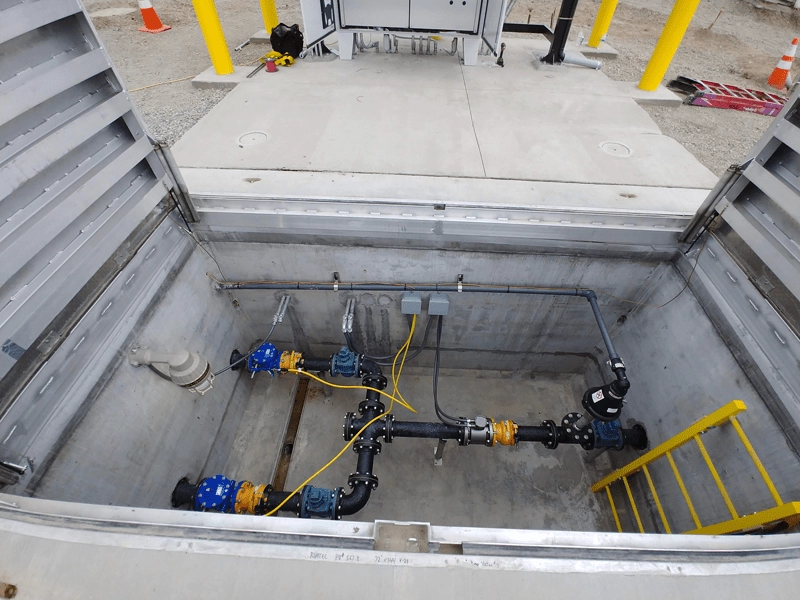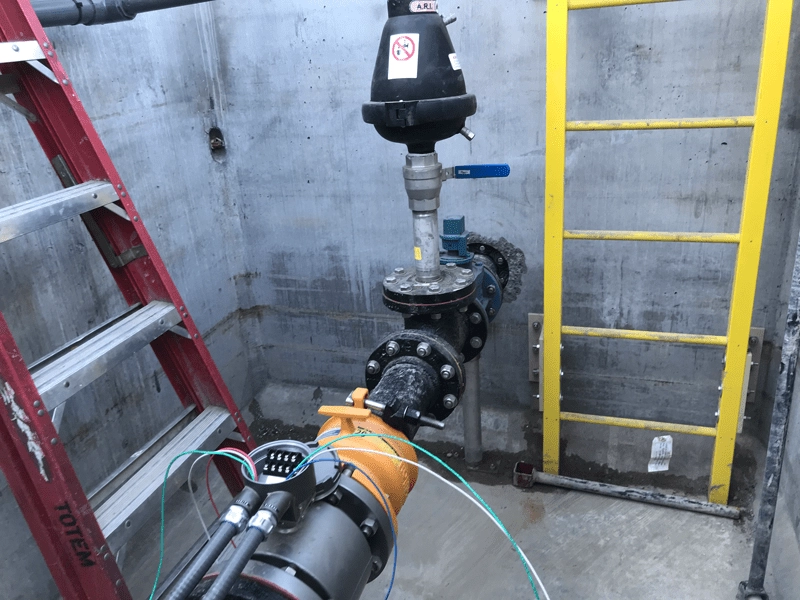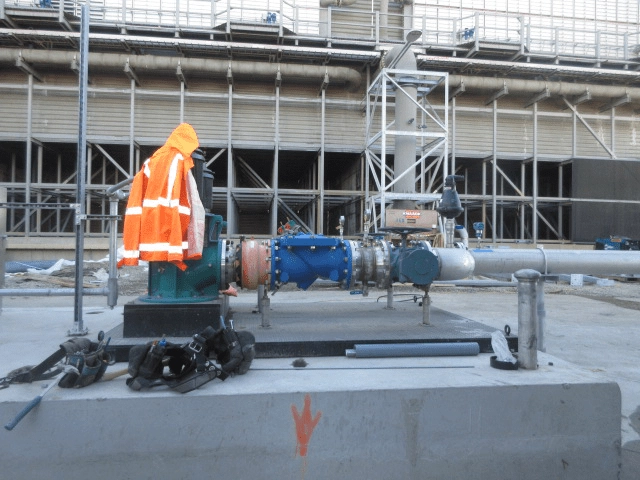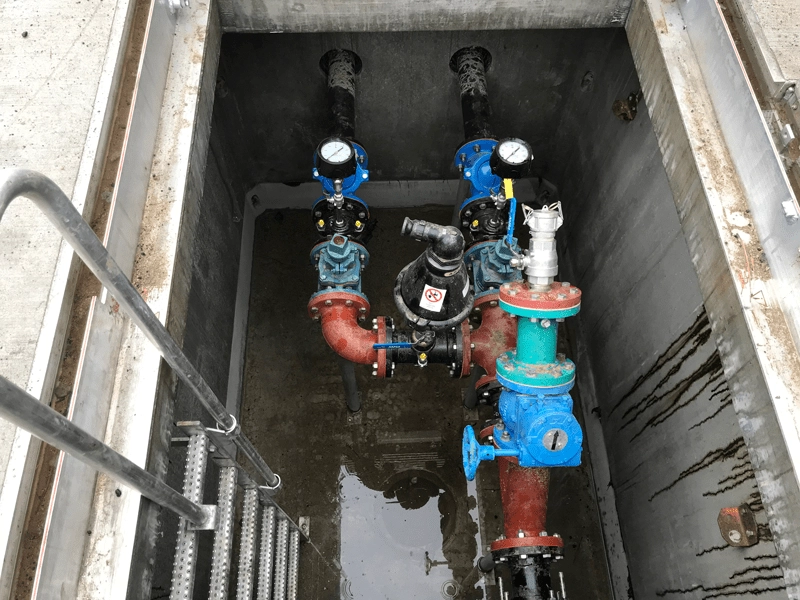
Romtec Utilities designs and supplies pump stations as complete systems that include all valves other necessary hardware. The dynamics of pumping into a pressurized pipeline requires that air is vented out of and into the pipe during pump station starts and stops, respectively. Additionally, accumulated air needs to be discharged continuously while the pumps are active without having an impact on pressure. Combination air valves are an effective solution to both of these requirements in a single valve by combining the functionality of air release valves and air/vacuum valves. Pressurized pipelines will often require both of these valves and today we’ll discuss the function of each individually.

To better understand how air release valves and air/vacuum valves function, it is important to understand how water is introduced into pipelines and when it should be present. Most air that enters a pipeline comes from three major sources. First, when pumps are not active and there is no flow, empty spaces along the line are filled with air. Equipment like pumps and valves will also feed air into the pipe. Finally, water contains about 2% dissolved air, this air is released when under adequate pressure and during changes in temperature. When left untreated, air will gather at high points along the pipeline and form bubbles that will increase pressure, reduce pumping efficiency, and can eventually dislodge causing a surge which will cause a water hammer effect that can damage valves and other equipment downstream.
Air release valves, or small orifice valves, are responsible for discharging air while the pipeline is actively being pumped through. These valves are strategically placed on high points of the pipeline where air is gathered into an air pocket. The valve works by allowing air from the pipe to enter the valve and displacing water. As the water level decreases, a small float inside the valve is triggered and opens a small orifice to release air. This process is repeated as many times as necessary to vent air from the pipeline. The big advantage of these valves is they are not affected by the pressure in the pipeline and can function continuously. Air release valves are available in many sizes for use in any pipe diameter size or flow requirements.

Air/vacuum valves, also known as large orifice valves, can also drain air from the pipeline, but this is only part of their functionality. When a pump starts or stops significant changes in pressure occur throughout the pipeline. Pump starts occur when there is air already in the pipeline and will significantly increase pressure if the air is not released. Air/vacuum valves open during pump starts to allow all of the air to be released so pumps can start and operate at their intended pressures. In contrast, when a pump stops a vacuum is created where there was fluid and can damage the pipes, even causing them to collapse in on themselves. Once again, air/vacuum valves are opened to alleviate the pressure (negative pressure in this case) by filling the line with air. These valves are important during pump starts and stops but cannot operate while a pump station is actively pumping due to the pressure.

These two valves serve such a similar purpose and are installed in the same locations that is often beneficial to combine their functionality into a combination air valve. There are many different sizes and styles of all of these valves to meet the unique requirements of each application. Romtec Utilities can include any brand or type of valves into your system to help improve your systems pumping efficiency while protecting it from damage caused by trapped air, like the water hammer effect. Contact Romtec Utilities today for more information about combination air valves and how they can benefit your pump station project!
